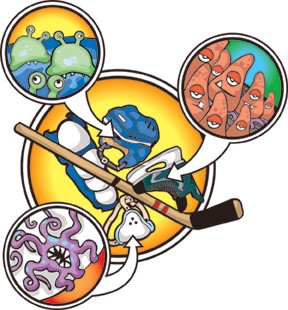Red, sore, prickly spots cover Jerry Brouse’s arms and legs every hockey season.
The burning, itching rash forced the Cambrian College Golden Shield defenceman to hang up his skates before the end of last year’s season.
“Doctors told me that my hockey equipment was irritating my skin,” says Brouse. “I’ve been playing for 16 years, but last year was the worst that it’s ever been. Just non-stop scratching – it was the itchiest thing that I’ve ever been through. By November I was done playing. I just couldn’t take it anymore.”
It isn’t a surprise that Brouse’s equipment has led to irritating complications. Sweaty gear houses more than just toes and feet.“
It’s a great medium for bacteria and yeast to grow. You sweat on [hockey equipment], it gets warm and moist, and then you shove it in a bag in a closet somewhere until the next practice,” says Duncan MacCannell, a University of Calgary graduate student in microbiology and infectious diseases.
MacCannell swabbed a sweaty set of hockey equipment to see what festered within. He says for the most part the worst aspect is the rotten stench. But a stinky jock strap or glove could be the least of a hockey player’s problems if he or she has an open wound.
Take Mikael Renberg for example. In January of 2003 the Toronto Maple Leafs forward burst a blister on his left hand while lacing his skate. He pulled on his hockey glove, and developed an infection that nearly cost him his hand. “When you enclose a space, like in a hockey glove or under a shoulder pad, you’re closing off air movement,” says Dr. Grant Lum, medical director of at George Brown’s fitness and lifestyle management program, and an NHL Players’ Association consultant. “These enclosed areas fill with sweat and create a reservoir for bacteria. If you put your hand in with an open wound you’re giving that bacteria a portal to enter your body,” says Lum.
He says there are three possible stages of an infection. The first is mild. You have an open wound with some swelling around the edges. As the infection develops, the swelling increases and the wound oozes puss. During the third phase the wound closes, trapping the bacteria – usually anaerobic bacteria, a group of bacteria that thrives with lack of airflow and oxygen – inside. The bacteria festers, it spreads beneath the skin’s surface, and tissue could begin to rot.
Source: sweat– The official magazine of the Ontario Colleges Athletic Association
words: vanessa mariga illustration:josh cappel




